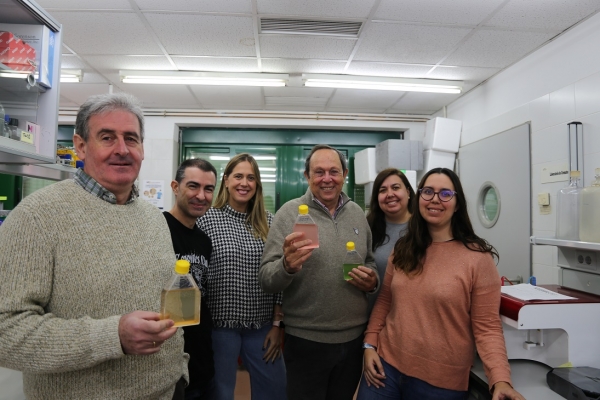Marine cyanobacteria invented the world. Evolution allowed them to develop photosynthesis, giving rise to the Great Oxidation, which spawned the increase in the concentration of oxygen on Earth and the birth of more complex life forms. And so on, until now.
These are the most abundant photosynthetic organisms on Earth. While producing more than 50% of the oxygen that sustains life, they remained hidden until the end of the last century when the two main genera were discovered: Prochlorococcus and Synechococcus.
Although devoid of coasts, these organisms arrived in Córdoba in 1996: specifically, the Adaptations in the Metabolism of Nitrogen and Carbon in Prochlorococcus Group at the University of Córdoba, with researcher José Manuel García Fernández, who was returning from a postdoctoral stay in France. At that point, the group led by Professor Jesús Díez Dapena led the study of the nitrogen metabolism that has allowed these organisms to adapt to situations with very low concentrations of the element (essential for living beings) and to colonize large areas of the oceans.
In order to paint a picture of the current situation in terms of research in this field, they have just published a review in the journal FEMS Microbiology Reviews in which they present the discoveries made since the beginning of the 21st century in relation to nitrogen metabolism adaptations, many of them made by this research group.
To cope with the nitrogen shortage, marine cyanobacteria became smaller, thus requiring less sustenance. "In addition, they adapted many aspects of their metabolism. When there is hardly any nitrogen, they synthesize proteins very similar to those that would exist under normal conditions, but they're smaller. They are reduced-size proteins, which work, but they need less nitrogen for their production," explains the main author of the article, Jesús Díez.
In addition to the search for alternatives to save nitrogen, they learned to survive in places where the concentrations of the element were minimal, developing systems that allow them to detect and capture nitrate available in the ocean in nanomolar concentrations; "concentrations so low that differentiating between that amount and zero is very difficult," says the researcher about this advance made by his group.
Along this line, they also discovered that the presence of some species of the genus Prochlorococcus was determined by the concentrations and forms of nitrogen in the areas of the ocean they inhabit. In other words, "depending on the concentration and form of nitrogen found in one area of the ocean, different varieties will emerge, according to the set of genes that allows them to survive in that environment," clarifies Díez.
All the advances that have been made since 1996 by this pioneering group in the field, and at the rest of international laboratories striving to better understand this lung of the Earth, are involved in the sphere of planetary ecology, since cyanobacteria produce huge amounts of biomass, which serves as food for other organisms. In addition, by producing oxygen and removing CO2 from the environment, they become an instrument to mitigate climate change.
Advancing their knowledge means, therefore, advancing our understanding of the past and present of the planet and securing its future.
Reference:
J Díez, A López-Lozano, M.A. Domínguez-Martín, G Gómez-Baena, M.C. Muñoz-Marín, and Melero-Rubio, J.M. García-Fernández, Regulatory and metabolic adaptations in the nitrogen assimilation of marine picocyanobacteria, FEMS Microbiology Reviews, 2022; https://doi.org/10.1093/femsre/fuac043


